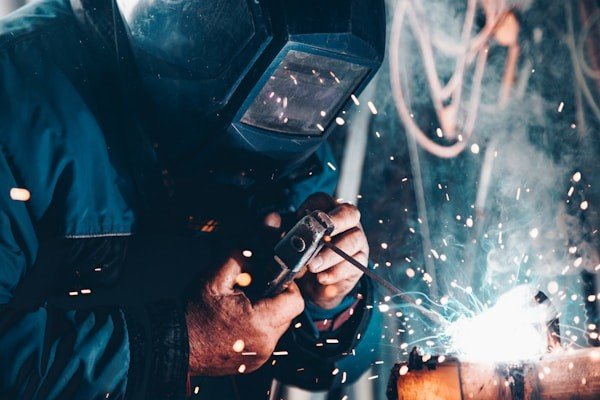Knife Gate Valves for Slurries, Solids & Severe Service
As a leading manufacturer of knife gate valves, we are committed to delivering durable and dependable fluid control solutions to clients across the globe for various industrial applications.
Request A Quote
Product Categories
Explore our comprehensive range of knife gate valves

Resilient Seated Knife Gate Valve
Ideal for slurries and wastewater applications with elastomer seats providing bubble-tight shutoff in low to moderate pressure services.
- Temperature range: -40°F to 400°F
- Tight shutoff performance
- EPDM, NBR, FKM, PTFE options

Metal Seated Knife Gate Valve
Designed for high-temperature abrasive services where soft seats would degrade, featuring durable metal-to-metal sealing.
- Temperature: 32°F to 1000°F+
- Abrasion resistant
- Extended service life

Bonneted Knife Gate Valve
Enhanced protection with fully enclosed design for hazardous or sticky media, preventing contamination and fugitive emissions.
- Emission control compliant
- Hazardous service rated
- Extended packing protection
Knife Gate Valve – Overview & Applications
Knife gate valves often get talked about only when they fail or when they save the day during a tough shutdown, becoming indispensable for various industrial applications. Anyone who has worked around slurry lines, thick pulp stock, wastewater systems, or wastewater with grit knows how much the right valve can either keep a plant humming or turn routine operations into a constant cleanup.
Choosing and running these valves well is equal parts engineering judgment and field experience. The details matter.
Knife gate valves are designed to cut through media with suspended solids and to isolate pipelines in tough, abrasive services. Their straight-through, full-bore geometry results in minimal pressure drop when open. The thin gate slides between resilient seated arrangements to produce shutoff, and the actuator can be manual, pneumatic, electric, or hydraulic.
They are not the right choice for every duty. These valves shine in low to moderate pressure service, especially where abrasives would chew up globe or ball valves. They struggle with high-pressure gas, fine throttling control, and very high temperatures unless tailored with metallic seats and special trims.
What is a Knife Gate Valve?
A knife gate valve is a linear motion isolation valve with a flat plate, or gate, that moves perpendicular to the flow. The gate edge is often honed or chamfered to shear through fibrous or slurry media. When open, the gate retracts into the body cavity or yoke, leaving a clear, nearly unobstructed passage.
Key characteristics:
- Full-bore opening with low pressure loss
- Excellent for slurries, fibrous pulp, powders, and viscous fluids
- Simple construction with relatively low weight, especially in wafer and lug designs
- Best suited for low to moderate pressure classes, commonly up to ASME Class 150 or PN10/PN16 in many models
Design and Components
Knife gate valves can be bonnetless, semi-bonneted, or fully bonneted. Bonnetless designs are compact and easy to maintain, while bonneted versions protect the gate and packing from contamination and are preferred when fugitive emissions or safety concerns are elevated.
Core components:
Body
Wafer, lug, or flanged pattern, with integral or replaceable seat
Gate
Stainless plate that slides to open or close, sometimes with hardfacing
Seat
Resilient (elastomer or polymer) or metal seated, single or double
Packing
Gland follower with packing rings to seal the stem or gate
Stem and yoke
Rising or non-rising stem, with a yoke supporting the actuator
Actuator
Handwheel, gear operator, pneumatic, electric, or hydraulic cylinder
Materials and Construction
Material selection sets the service window for temperature, pressure, corrosion resistance, and wear life.
Common body and gate alloys:
- 304/316 stainless steel for general corrosion resistance in water, wastewater, and many chemicals
- Duplex and super duplex where chloride stress cracking and erosion are concerns
- Carbon steel with coating for non-corrosive slurries, dry powders, or utility duties
- Ductile iron as a cost-effective choice in many municipal applications
- Hardfacing on gate edges, seats, or liners using Stellite or similar alloys for abrasive slurries
Technical Parameters Overview
Comprehensive specifications for optimal valve selection
| Material | Temperature Range | Best Applications |
|---|---|---|
| EPDM | -40°F to 250°F | Water, chemicals, not suitable for hydrocarbons |
| NBR (Nitrile) | -10°F to 212°F | Oils, fuels, moderate chemical resistance |
| FKM (Viton) | -15°F to 400°F | Broad chemical resistance at higher temperatures |
| PTFE | -20°F to 400°F | Excellent chemical resistance, lower resilience |
| UHMWPE | -40°F to 180°F | Abrasion resistance for slurries |
| Metal Seated | 32°F to 1000°F+ | High temperature, abrasive services |
| Parameter | Specification | Notes |
|---|---|---|
| Pressure Class | ASME Class 150, PN10/PN16 | Heavy-duty models available in higher ratings |
| Size Range | DN 50 to DN 1200 (2″ to 48″) | Custom sizes available upon request |
| Body Styles | Wafer, Lug, Flanged | Choose based on installation requirements |
| Standards | MSS SP-81, ISO 5208, EN 1092 | ASME B16.5 flange connections |
| Leakage Rate | Per ISO 5208 | Soft seats: bubble-tight; Metal seats: Class IV-VI |
| Feature | Unidirectional | Bidirectional |
|---|---|---|
| Seat Location | One side, upstream pressure | Seats on both sides |
| Shutoff | Bubble-tight in one direction | Tight in both directions |
| Best Use | Known flow direction slurry lines | Reversible flow, tank drains |
| Cost | Lower, simpler construction | Higher due to dual seats |
| Installation | Must be oriented correctly | More forgiving in mixed conditions |
Common Applications
These valves, often equipped with resilient seated designs, handle severe service conditions in the industry where standard gate, globe, or ball valves fail early due to solids build-up or erosion, making them suitable for various industrial applications.
Mining and Minerals
Tailings, concentrate slurries, lime slurry, thickener underflow, and other industrial applications
Pulp and Paper
Stock lines, recycled fiber, black liquor with corrosion-resistant materials
Wastewater and Sewage
Raw influent, grit removal lines, sludge service applications
Power and Biomass
Fly ash, bottom ash sluice, FGD slurry, biomass digestate
Chemical Processing
Salt slurries, titanium dioxide, catalysts in slurry phase
Food and Beverage
Pomace, spent grain, syrup, and molasses lines in certain grades
Advantages and Limitations
Advantages
- Low pressure drop when fully open
- Tolerant of solids and fibers, self-cleaning gate edges
- Compact face-to-face, simplifies retrofits
- Straightforward maintenance with field-replaceable parts
- Wide actuator choices for automated control
- Cost-effective isolation in large line sizes
Limitations
- Pressure class and temperature limits with soft seats
- Not ideal for throttling unless specifically designed
- Potential for seat erosion in high-velocity service
- Packing leakage if not properly maintained
- Gate galling with sticky media without proper coatings
- Metal seats have higher leakage rates than ball valves
Useful Rule of Thumb: If you must meter flow precisely or seal high-pressure gas bubble-tight, pick a different valve. If you need to isolate a slurry line at modest pressure and keep maintenance reasonable, a knife gate is a strong candidate.
Technical Documentation
Download comprehensive technical resources for our knife gate valves
Technical Brochure
Complete product specifications, material options, and selection guidelines
Download BrochureSample Drawing
Dimensional drawings, installation details, and face-to-face specifications
Download DrawingNeed Custom Documentation?
Contact our engineering team for project-specific drawings, material certifications, and compliance documentation.
Get in Touch
Request a quote or contact our technical experts for valve selection assistance
Email Response
Within 24 hours
Quote Delivery
Within 48 hours
Technical Support
Expert guidance
Your information is secure and will never be shared with third parties
